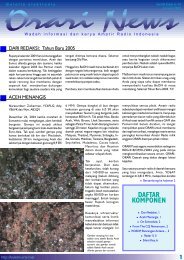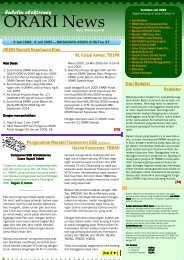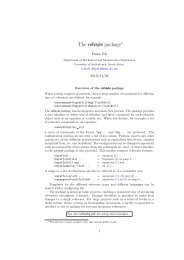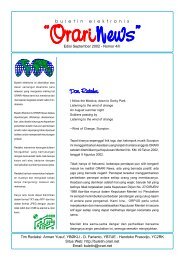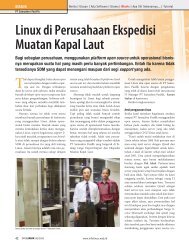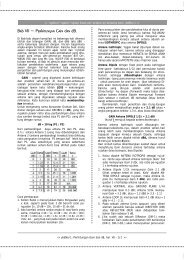You also want an ePaper? Increase the reach of your titles
YUMPU automatically turns print PDFs into web optimized ePapers that Google loves.
actual value being determined by the conduction angle (narrower<br />
conduction angles result in a higher peak-to-dc ratio). Less than<br />
120 degrees is a typical conduction angle and a peak-to-average<br />
ratio of 5 is typical in high efficiency class-C service. The minimum<br />
value of ebmin is usually limited by the fact that if it is too low,<br />
the grid current in triodes or the screen current in tetrodes will be<br />
needlessly high, resulting in high grid or screen dissipation. Little<br />
will be gained as far as output power is concerned if the tube is<br />
driven “harder.” The minimum value of anode voltage is usually in<br />
the region where the anode constant-current curves bend upward<br />
(entering saturation, see Figure 27.) In the case of triodes, this<br />
is near the “diode line,” where the instantaneous anode and grid<br />
voltages are equal. The practical procedure in calculating tube<br />
performance is to arbitrarily choose Point No. 2, complete the<br />
calculations, and compare the data to target values and repeat the<br />
process until the desired results are obtained.<br />
In the case of the 4CX20,000A/8990, let us choose a peak value of<br />
anode current about five times that of the d-c anode current of 3.2<br />
Amperes, or approx. 16 A. Let us choose a minimum instantaneous<br />
anode voltage of 1 kilovolt, the same value of screen voltage used<br />
when the curves were taken. This defines the upper end of the<br />
operating line. Locate this point on the tube curves, and refer to<br />
it as Point No. 2 in Figure 27. (The anode currents which flow<br />
at various combinations of anode and grid voltages are shown<br />
by the anode-current lines.) The value of current for each line is<br />
noted. In-between values can be estimated closely enough for our<br />
purposes. Draw a straight line between Points 1 and 2. This line<br />
is the operating line, and shows the current and voltage values at<br />
each instant in the r-f cycle when the current is being taken from<br />
the tube. The nonconducting half of the r-f cycle would be shown by<br />
extending the line an equal distance on the opposite side of Point<br />
No. 1. There is little to be gained by this line extension, since no<br />
current flows during this half of the cycle.<br />
The EIMAC <strong>Tube</strong> Performance Computer can now be used to<br />
obtain the average currents (what will become meter readings in<br />
actual operating conditions) and anticipated power values from<br />
this operating line. Overlay the computer on the constant-current<br />
curve so that the “guide lines” of the computer are parallel with the<br />
operating line. Slide the computer (without turning it) until the line<br />
OG passes through the d-c voltage point No. 1, and line OA passes<br />
through the peak-current Point No. 2. Be sure the guide lines are<br />
still parallel to the operating line.<br />
Note that the lines OB, OC, OD, OE, and OF all cross over the<br />
operating line.<br />
39




